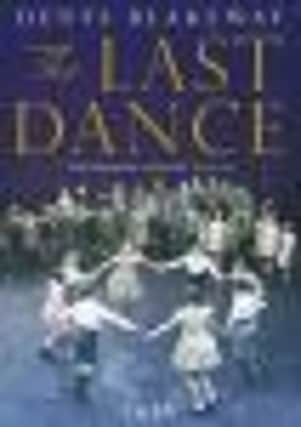Book review: The Last Dance: 1936 by Denys Blakeway


Portrayed in Denys Blakeway’s enthralling and lively book as ‘the hinge of the decade’, it was a year of royal crises, social and political turning points and the harbinger of a second, devastating world war.
From the January deaths of the two embodiments of Empire, Rudyard Kipling and King George V, to the late November fire that destroyed London’s famous Crystal Palace and the abdication of Edward VIII just weeks later, a year that had started with optimism for the future ended in despair and destruction.
Advertisement
Hide AdAdvertisement
Hide AdFor the majority of the British people, the 1930s had not been the dark and gloomy experience of many other countries around the world despite the long shadow cast by the First World War.
However, all was to change within the space of 12 months...German troops marched into the Rhineland, the Berlin Olympics were hijacked by the Nazis and civil war broke out in Spain when conservative army generals led by General Franco began a military coup to depose the left-wing government.
At home, a political war broke out between Neville Chamberlain and Winston Churchill over Britain’s future, consumerism began its steady rise, the television age was born, the Jarrow marchers set off for London and George Orwell made his groundbreaking trip to Wigan.
Meanwhile, the ideas that had sustained Britain’s imperial mission were losing their currency and the first television broadcast from Alexandra Palace in London would end the country’s lack of awareness of what was happening in its own backyard.
Advertisement
Hide AdAdvertisement
Hide AdMany of the events and developments of 1936 would be seen in retrospect as the precursors of the changes that led to the world we know today and not least amongst those was Orwell’s foray to the north.
Commissioned to write a book on Britain’s industrial northern hinterlands, the Eton-educated author arrived in Wigan on a cold Saturday night in February and found the story he had been looking for.
His legendary portrayal of the town as one of bleak surroundings and blighted lives in The Road to Wigan Pier became emblematic of a general picture of the north as an industrial and human scrapyard.
‘He would never be the same man, and the town of Wigan would never forgive him,’ observes Blakeway.
Advertisement
Hide AdAdvertisement
Hide AdA few months later, the Jarrow marchers set off for London to highlight unemployment and poverty in the North East of England and, in a surprise turn, the Labour Party turned its back on the crusade while Middle England took the marchers to its heart.
Although the march failed in its main aims, it did strike at the conscience of the country and gave rise to a new very British idea of social justice which would eventually create the welfare state.
The lives and memoirs of politicians, writers, actors, journalists, housewives and even hostesses all help to paint a broad and fascinating picture of one packed and pivotal year, a year during which Adolf Hitler was waiting in the wings to wreak havoc on the world.
Blakeway is one of Britain’s leading documentary makers and this enables him to bring a colourful and very visual element to the dramas of a year that can be seen now as a stage rehearsal for the momentous events to come.
(John Murray, paperback, £9.99)